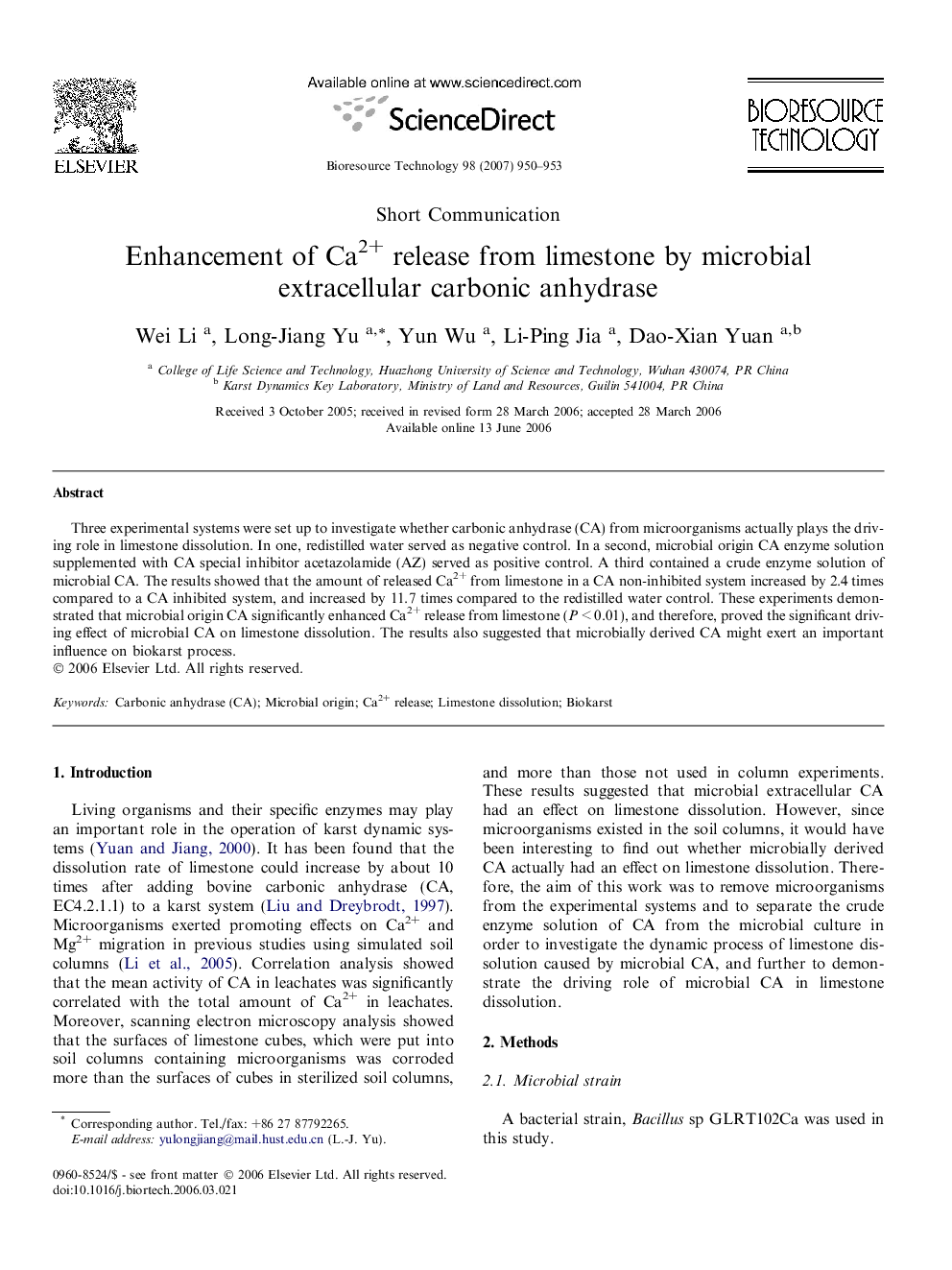| Article ID | Journal | Published Year | Pages | File Type |
|---|---|---|---|---|
| 686639 | Bioresource Technology | 2007 | 4 Pages |
Three experimental systems were set up to investigate whether carbonic anhydrase (CA) from microorganisms actually plays the driving role in limestone dissolution. In one, redistilled water served as negative control. In a second, microbial origin CA enzyme solution supplemented with CA special inhibitor acetazolamide (AZ) served as positive control. A third contained a crude enzyme solution of microbial CA. The results showed that the amount of released Ca2+ from limestone in a CA non-inhibited system increased by 2.4 times compared to a CA inhibited system, and increased by 11.7 times compared to the redistilled water control. These experiments demonstrated that microbial origin CA significantly enhanced Ca2+ release from limestone (P < 0.01), and therefore, proved the significant driving effect of microbial CA on limestone dissolution. The results also suggested that microbially derived CA might exert an important influence on biokarst process.
